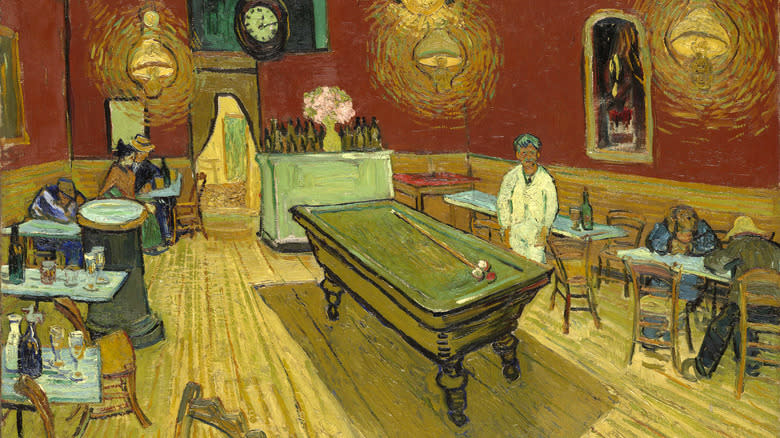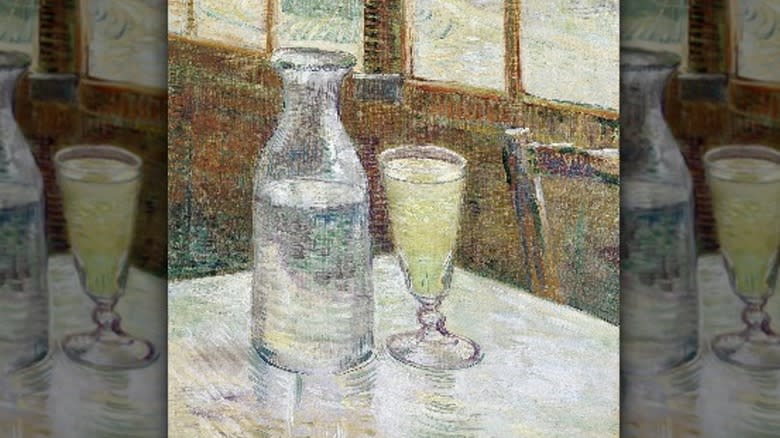The Creative Way Vincent Van Gogh Would Pay For Drinks At Parisian Cafes

- Oops!Something went wrong.Please try again later.
- Oops!Something went wrong.Please try again later.
The famous Dutch painter Vincent van Gogh wouldn't be the same artist we know and love today if he hadn't moved to Paris in 1886 at the age of 33 – just four years before his untimely death in 1890 in the little town of Auvers-sur-Oise. Van Gogh only stayed in Paris for two years, but his time there was a pivotal turning point in his artistic career. He had initially moved there to live with his brother, Theo van Gogh, who was a successful art dealer living in Montmartre, which was the art district of Paris.
A few years prior to van Gogh's arrival, a plague of insects had descended upon France's vineyards. Because of the short supply, wine became too expensive for most Parisians. Partly because of this shortage, absinthe rose in popularity. The green fairy, as it was called, had been used medicinally as an antimalarial during the French conquest of Algeria in the 1840s. After returning from the war, soldiers introduced the wormwood liquor to French drinking culture.
Van Gogh became a regular at Parisian cafes (what we would today call bars), where absinthe was his drink of choice. Although absinthe was cheaper than French wine at the time, van Gogh was notoriously broke all his life. His brother Theo was essentially the painter's patron, without whom he wouldn't even have had money for paint. Lacking real money, van Gogh would offer still-life paintings of the cafes or their owners to pay off his bar tab. These would often be hung on the cafe's wall.
Read more: 13 Liquors Your Home Bar Should Have
Absinthe, La Muse

When thinking of which paintings could have been bartered for food, you have the famous 1888 painting "Café Terrace at Night" with its deep blue night sky richly dotted with stars counterbalancing the warm and welcoming yellows of the terrace. Then there's the almost psychedelic 1888 painting "The Night Café," which depicts a young man standing over a billiards table as the ceiling lamps emanate an unearthly glow.
A year earlier, his 1887 painting "Cafe Table With Absinthe" (pictured) was only just starting to outgrow his earlier, more muted palette. There are swirls of hushed aquamarine and the brushstrokes instill a calm though unsettling sense of movement. By the end of van Gogh's time in Paris, his paintings had achieved their iconic intimation of fiery colors bursting from the seams of ordinary life. Some chalk up this difference to his acquaintance with other avant-garde artists living in Paris at the time.
Others question whether the absinthe, which later developed a dark reputation, was secretly poisoning him with thujone, which is known to cause an extreme sensitivity to the color yellow in high doses. Whatever the cause of his artistic evolution, the drinking and partying became too much for him and led him to leave Paris in 1888. Whether any of the paintings listed here were used as barter for food and drink is unknown. As it goes, there are many van Gogh paintings that would fit the description of a still-life cafe.
Read the original article on Tasting Table.

